34+ Sample Material Transfer Agreement
-
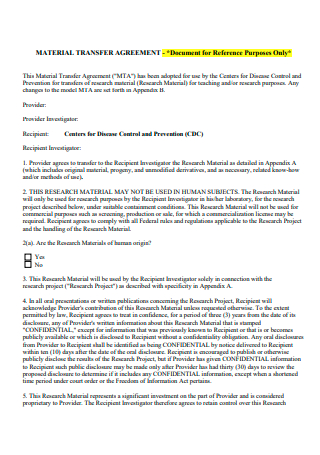
Material Transfer Agreement Template
download now -
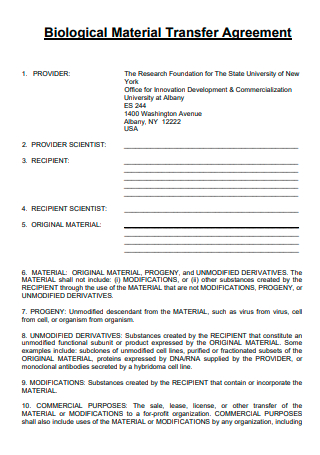
Biological Material Transfer Agreement
download now -
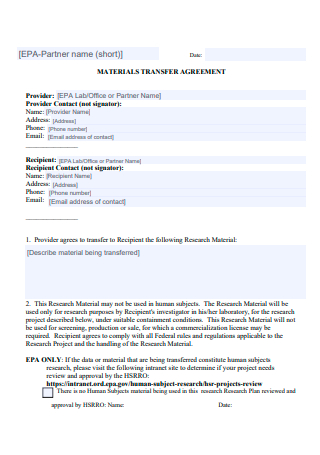
Basic Material Transfer Agreement
download now -
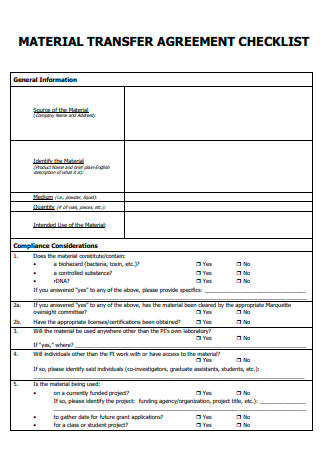
Material Transfer Agreement Checklist
download now -

University of Material Transfer Agreement
download now -
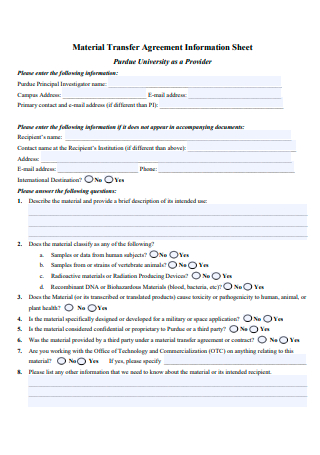
Material Transfer Agreement Information Sheet
download now -

Material Transfer Agreement in PDF
download now -
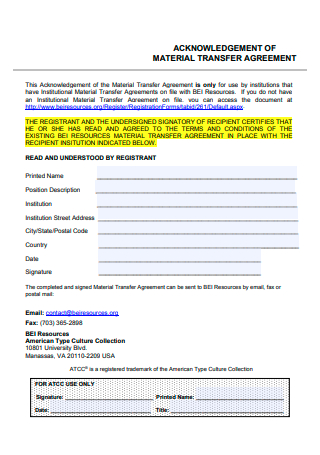
Acknowledgement of Material Transfer Agreement
download now -
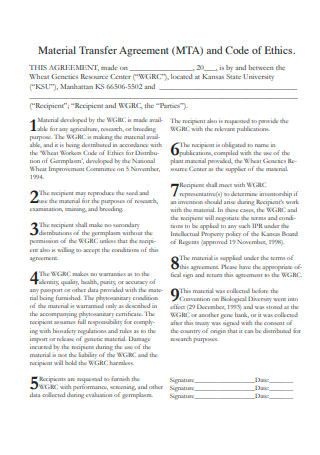
Standard Material Transfer Agreement
download now -
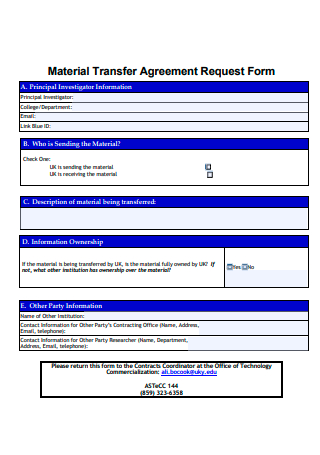
Material Transfer Agreement Request Form
download now -
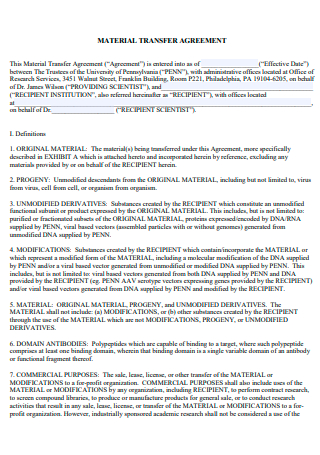
Printable Material Transfer Agreement
download now -
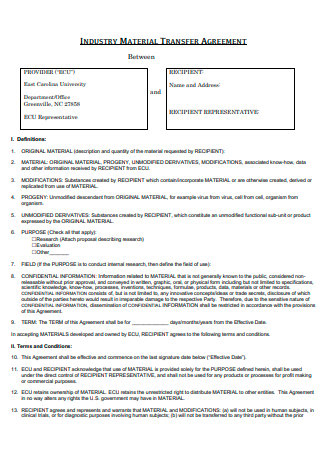
Industry Material Transfer Agreement
download now -
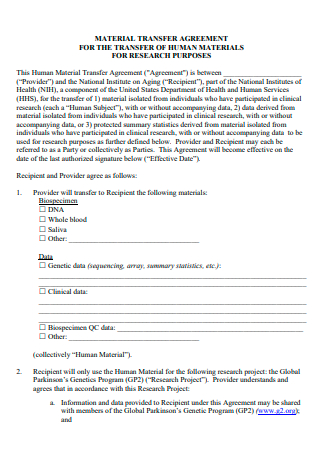
Formal Material Transfer Agreement
download now -
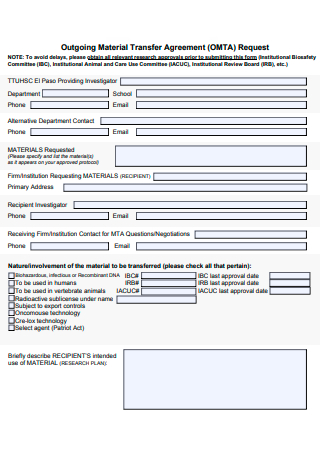
Outgoing Material Transfer Agreement Request
download now -
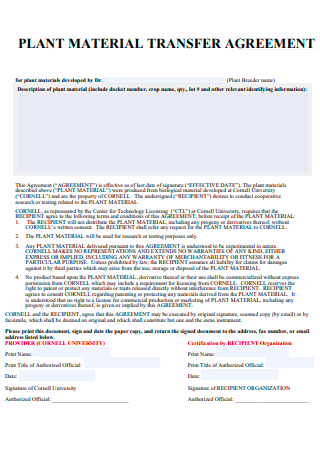
Plant Material Transfer Agreement
download now -
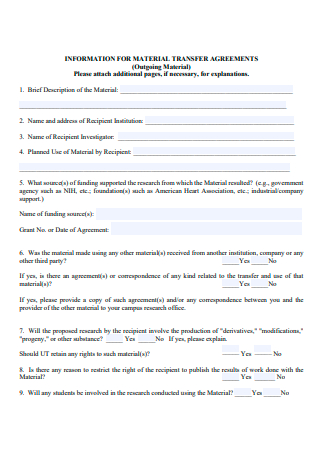
Information For Material Transfer Agreement
download now -
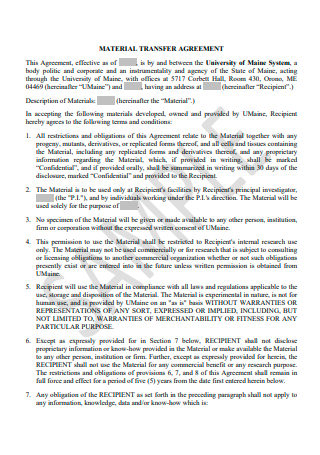
Sample Material Transfer Agreement
download now -
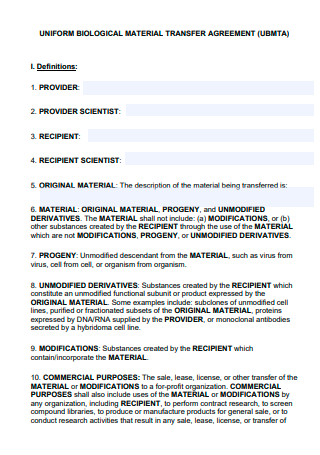
Uniform Biological Material Transfer Agreement
download now -
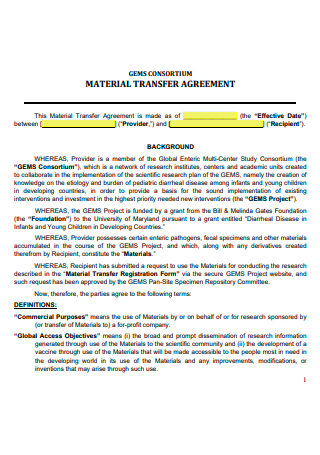
Simple Material Transfer Agreement
download now -
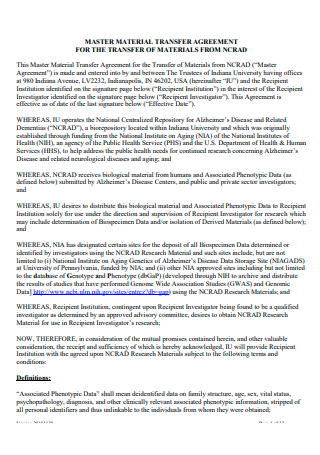
Master Material Transfer Agreement
download now -
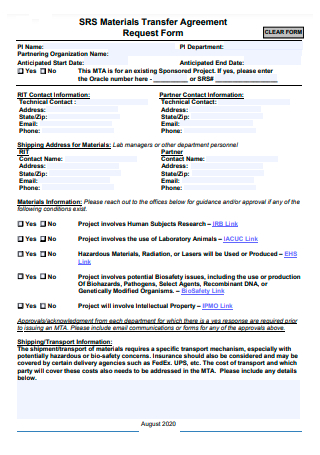
Materials Transfer Agreement Request Form
download now -
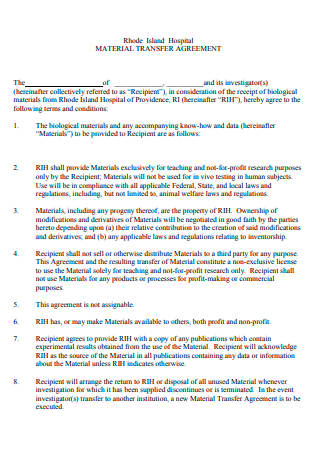
Hospital Material Transfer Agreement
download now -

Bank Material Transfer Agreement
download now -
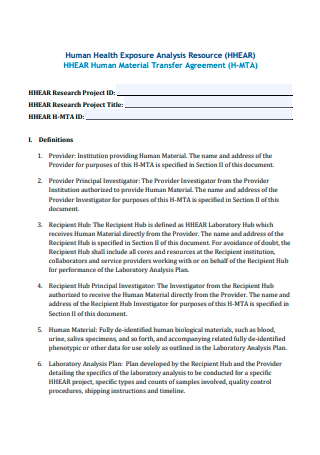
Human Material Transfer Agreement
download now -
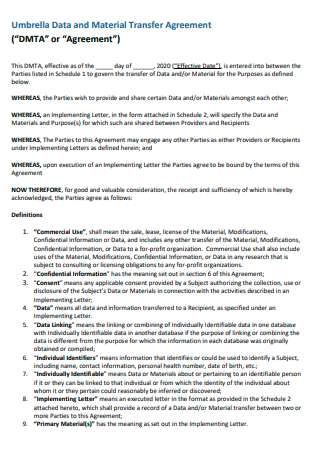
Data and Material Transfer Agreement
download now -
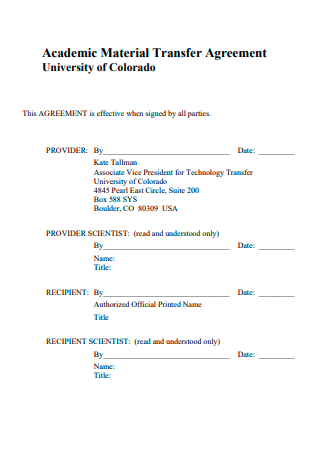
Academic Material Transfer Agreement
download now -
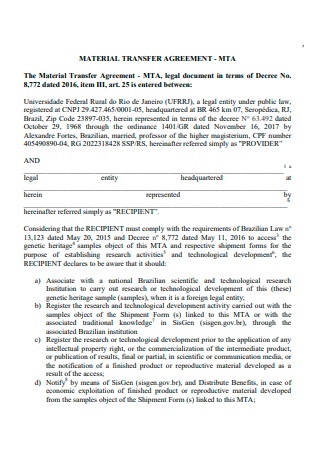
Material Transfer Agreement Format
download now -
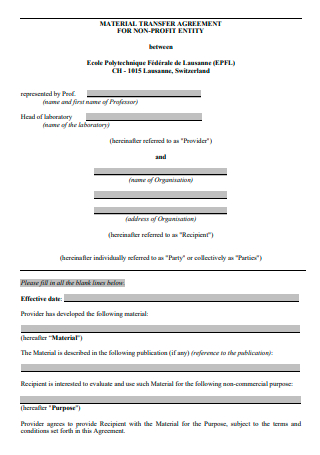
Material Transfer Agreement For Non-Profit Entity
download now -
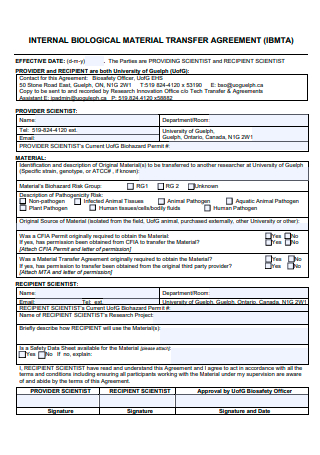
Internal Biological Material Transfer Agreement
download now -
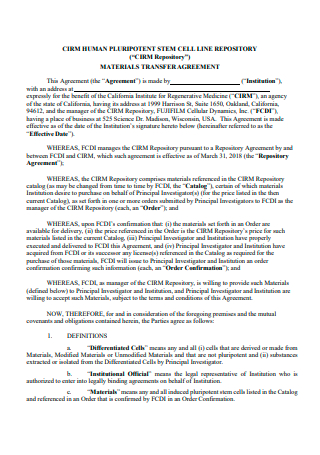
Material Transfer Agreement Example
download now -
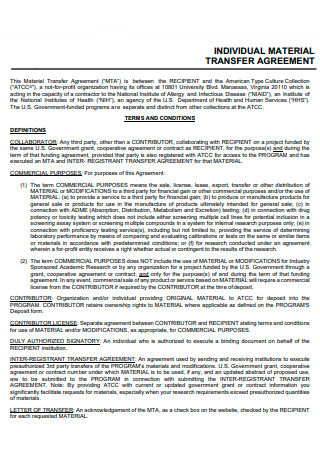
Individual Material Transfer Agreement
download now -
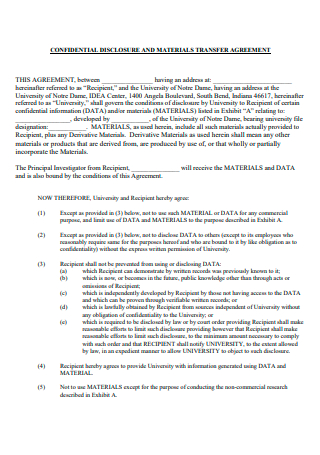
Confidential Disclosure and Material Transfer Agreement
download now -
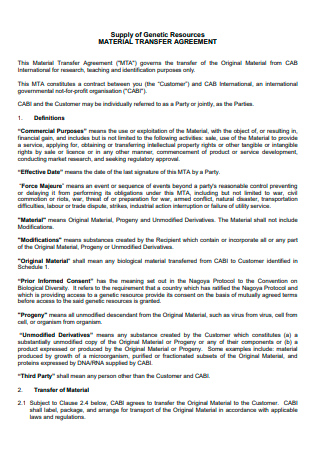
Supply of Genetic Resources Material Transfer Agreement
download now -
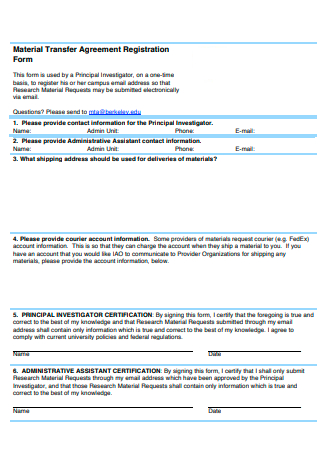
Material Transfer Agreement Registration Form
download now -
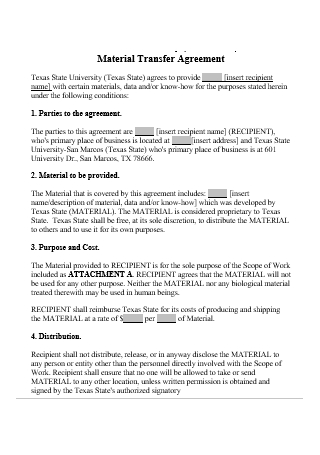
Material Transfer Agreement in DOC
download now
FREE Material Transfer Agreement s to Download
34+ Sample Material Transfer Agreement
What Is a Material Transfer Agreement?
What’s Inside a Material Transfer Agreement?
How to Write a Material Transfer Agreement
FAQs
What is the purpose of an incoming material transfer agreement?
Why is a material transfer agreement needed?
What is the purpose of an outgoing material transfer agreement?
What Is a Material Transfer Agreement?
Before we define what a material transfer agreement is, what does research material mean? To simply define it, research material refers to any and all types of material, such as documents, records, software, information, and so on that are created during the research activity. They are usually tangible and as such may be transferred from one institute to another for personal research purposes provided that a prior agreement has been made between them.
A material transfer agreement is a legal document that oversees the transfer of physical research materials between two organizations where the receiver wants to utilize the materials for his or her own research goals and not necessarily for use in research collaborations between the recipient and the provider. This type of document also serves as a sort of bailment agreement in which the recipient is given temporary custody of the provider’s content but not ownership of it. This type of agreement also specifies the provider’s and recipient’s rights in relation to the research materials being used and their derivatives.
What’s Inside a Material Transfer Agreement?
Since a material transfer agreement is a legal document, utmost care should be taken whenever you’re writing one. With that being said, here are the provisions and clauses that you should keep in mind whenever you try to draft a material transfer agreement:
How to Write a Material Transfer Agreement
Here are the steps and/or guidelines that can also serve as core principles for you to follow whenever you prepare to draft a material transfer agreement:
-
1. Identification of the Parties
The first thing to do when drafting a material transfer agreement is to identify the parties involved and define their responsibilities throughout the agreement’s duration. Typically, the parties involved in a material transfer agreement are the provider and the recipient. The main role of the provider is to provide the necessary research material and supporting data to the recipient. The main role of the recipient is to utilize the given research material and supporting data exclusively for the approved research project and not for any unapproved commercial objectives or personal gain.
-
2. Identification of the Research Material
After identifying the parties involved in the material transfer agreement, the next thing that should be done is to identify the research material to be transferred along with its supporting data if applicable. Typically, the most common research materials that are to be transferred in this agreement are biological materials, mouse models, and reagents. Sometimes, chemical materials or different types of software are also transferred in this agreement.
-
3. Writing the Agreement
After identifying what type of research material is to be transferred in this agreement, this step will then follow. Keep the material transfer agreement as basic as possible when writing it. This is done so that the institutions can effectively monitor and enforce the agreements. Furthermore, material transfer agreements must be compatible with a realistic evaluation of the institutions’ risks and advantages, both in terms of legal responsibilities and prospective income generating.
-
4. Discussion of Risks and Assessment
After writing the material transfer agreement, this step will then follow. It is important for the parties involved to have a discussion concerning the risks during the material transfer and the methods in which it can be properly assessed. The first sort of risk is related to the materials’ safety in usage. The agreement must ensure that the research materials provided are never used in research involving human subjects. Legal risk is another sort of risk that may be assessed. Unauthorized use of research resources may result in victims suing institutions, and other parties may allege that the materials provided are not of the standard stated by the distributor. When the risks have been adequately assessed, the agreement may restrict the delivery of research materials to the recipient, requiring the recipient to return the materials to the originator in order to access resources under its conditions.
-
5. Document Verification
After discussing the risks involved in this agreement, now is the time to give the document a verification procedure. When verifying the document, take extra caution that no overreaching claims are written. When institutions seek to overreach their rights in an invention by invoking reach-through claims, problems develop. These clauses are troublesome not just in terms of intellectual property legislation, but also in terms of negotiation, and they will almost certainly cause the execution of a final agreement to be delayed. All material transfer agreements should be subject to a no-reach-through policy. Such words, which are frequently associated with research materials supplied by industry, should be omitted by research institutes. Similarly, institutions should resist the temptation to include reach-through measures in this agreement.
FAQs
What is the purpose of an incoming material transfer agreement?
An incoming material transfer agreement’s purpose is to protect a researcher’s ability to utilize and publish research, as well as any current or potential intellectual property, and to specify the use of any accompanying private information. An incoming material transfer agreement is reviewed to verify that the agreement provisions do not conflict with rights given in other agreements related to the study.
Why is a material transfer agreement needed?
A material transfer agreement is required because it offers the receiver a license to use the exclusive material while also ensuring that both parties are aware of how the materials may be used and any limitations. Material transfer agreements also control problems such as ownership of adaptations and changes of the materials, risk transfer, limitations on usage, confidentiality of data related to the contents, and rights to innovations and/or research results deriving from their use.
What is the purpose of an outgoing material transfer agreement?
A material transfer agreement for outgoing material is often used to protect the material supplier from losing control of the research material (and its supporting data if applicable) and its research use. If there is no agreement, the recipient of the content has no legal constraints on using or transferring the material.
Whenever the transfer of research material and their supporting data between a provider and a recipient is needed, a material transfer agreement should be drafted so that concrete guidelines are present concerning how the research material is to be transferred, how the research material is to be handled throughout the agreement’s duration, and how any disputes should be resolved if any should arise. In this article, there are plenty of sample templates for you to have a look at whenever you need to know what this type of document is and whenever you need a reference should you need to make one.
